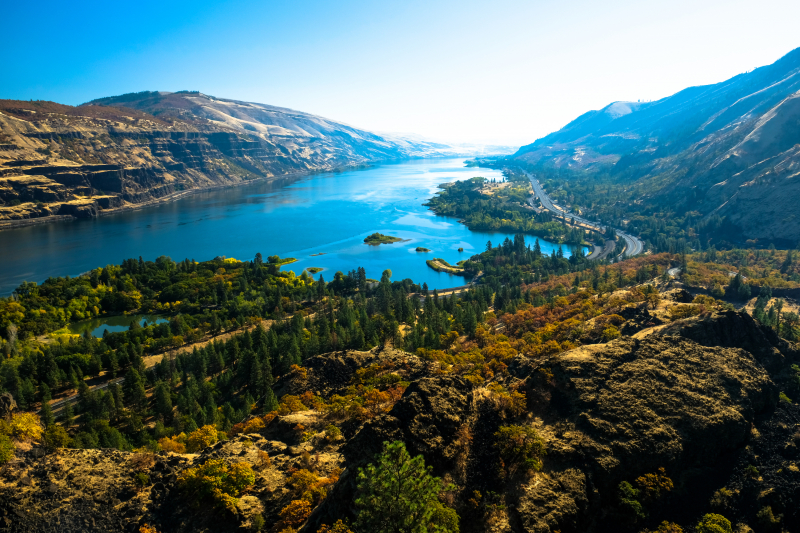Columbia River
The Columbia River is North America's greatest river that flows into the Pacific Ocean. Only the Mississippi, St. Lawrence, and Mackenzie rivers release more water on the continent. The Columbia River is one of the world's most important producers of hydroelectric power, accounting for a third of the country's total hydropower potential. Its mouth also serves as the first deepwater port north of San Francisco. Between the headwaters in British Columbia and the US border, two-fifths of the river's 1,240-mile (2,000-km) flow is in Canada, with 500 miles in Canada.
The Columbia River has a drainage area of 258,000 square miles (668,000 square kilometers), with 85 percent of it in the northwest United States. The Kootenay, Snake, Pend Oreille, Spokane, Okanogan, Yakima, Cowlitz, and Willamette rivers are major tributaries. When the snow in the mountainous watershed melts, high flows occur in late spring and early summer. In the fall and winter, low flows cause water shortages for the river's hydroelectric facilities.
Length: 2,000 Km












